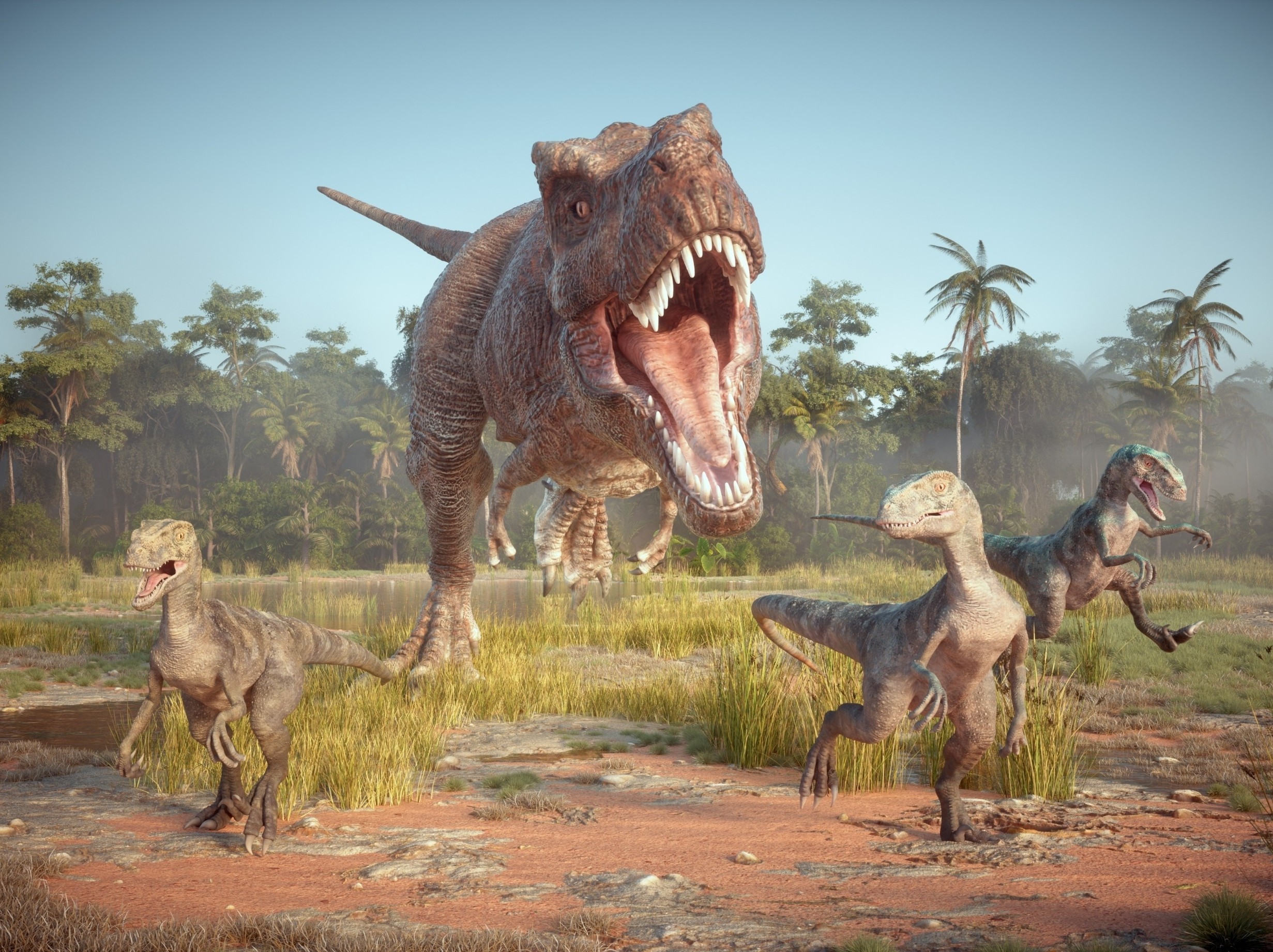Fresh tracks stamped into 76 million-year-old mud are telling a new story about dinosaur society in southern Alberta. A densely packed patch of footprints shows several species strolling together – a first for the Late Cretaceous rock record.
The find comes from the Skyline Tracksite in Dinosaur Provincial Park, a place famous for skeletons but almost bare of tracks until now.
“It was incredibly exciting to be walking in the footsteps of dinosaurs 76 million years after they laid them down,” explained Dr. Brian Pickles of the University of Reading who helped unearth the assemblage.
Dinosaurs walked together
The slab is no bigger than two parking spaces, yet it preserves thirteen footprints from horn frilled ceratopsian dinosaurs, a probable ankylosaurid, three prints from two large tyrannosaurid carnivores, and one dainty track from a small meat eater.
All of the tracks head in nearly the same direction and sit on the same mud layer, evidence that the animals passed by within hours, perhaps minutes, of one another.
Because the ceratopsian imprints sit shoulder to shoulder with equal spacing, the team suspects the animals were moving as a coordinated group.
Such orderly trackways match earlier monodominant bonebeds from Styracosaurus herds in the same formation, strengthening the case that horned dinosaurs traveled together for much of the year.
Mixed herds are rare even in footprints; earlier prints show single species gatherings or solitary walkers.
The Canadian site therefore widens the behavioral picture, hinting that plant-eaters of different builds could coordinate their movements when the landscape demanded it.
Predator prints followed dinosaurs
Two tyrannosaur prints slice across the herbivore lane, as if the hunters were pacing the herd from a safe distance.
The three-toed marks, about 18 inches long, resemble footprints from the Bellatoripes fredlundi trackway farther north that first suggested tyrannosaurs sometimes moved in pairs or packs.
Whether the predators shadowed the plant eaters that day is unknown, yet their presence offers a motive for banding together.
In modern savannas, zebras often merge with wildebeest to dilute risk and borrow their neighbors’ sharp senses; studies in the Serengeti show vigilance drops for both species inside mixed herds.
Applying that logic to the Cretaceous, stocky ankylosaurs with clubbed tails could add armor, while horned ceratopsians contributed sheer numbers and vision at different heights. Together they might have complicated the hunting plans of a predator.
The prints sit in a thin mudstone band deposited when a winding river abandoned its channel, leaving a shallow lake that dried in patches.
Foot pressure pushed watery clay aside, building raised rims still visible today. The overlying sand quickly buried the impressions, and iron minerals later cemented the layer into a rust colored bench.
Because steep badland slopes erode about one tenth of an inch each year, the rocks seldom expose flat bedding planes where tracks show up.
The team’s “search image” looking for those iron-rich rims peeking above softer sandstone has already revealed several more tracksites in the park, suggesting many prints went unnoticed for decades.
With portable GPS gear, the researchers mapped every depression, then photographed the surface in overlapping grids to create a precise 3D model.
The digital replica lets scientists measure stride length, toe angles, and the subtle suction cups left when feet pulled free, all without further damaging the fragile layer.
Dinosaur prints are fragile and rare
Dinosaur tracks are far more vulnerable than bones. While skeletons can fossilize deep underground and survive eons of erosion, footprints are surface impressions that vanish quickly if not buried and preserved under the right conditions.
Even once exposed, the thin ironstone layers that hold them can flake apart within months due to wind, rain, and temperature swings.
Researchers also face difficulties in identifying which dinosaur made which track, especially when skeletal features overlap between species.
For instance, distinguishing between ceratopsian and ankylosaurid tracks can be tricky without clear impressions of both front and hind feet. This uncertainty limits how precisely behavior can be inferred from fossil footprints.
Why the discovery matters
Until now, signs of dinosaur social life rested largely on mass death bonebeds or long, single species trackways.
The Skyline Tracksite adds the missing piece: it captures different herbivores walking side by side – a behavior that parallels today’s large mammal guilds that share both grass and predators.
The trackway also reminds field crews to rethink “empty” rock. Dinosaur Provincial Park has yielded more than 400 articulated skeletons, yet typical tracks were thought absent.
Recognizing the tell tale mud rims may transform ichnology in the Canadian badlands and other steep terrains carved from Late Campanian river deposits.
The study is published in the journal PLOS One.
—–
Like what you read? Subscribe to our newsletter for engaging articles, exclusive content, and the latest updates.
Check us out on EarthSnap, a free app brought to you by Eric Ralls and Earth.com.
—–
